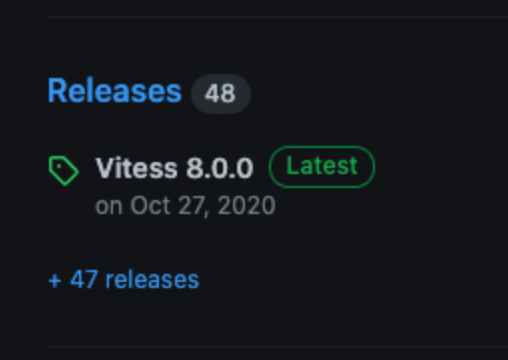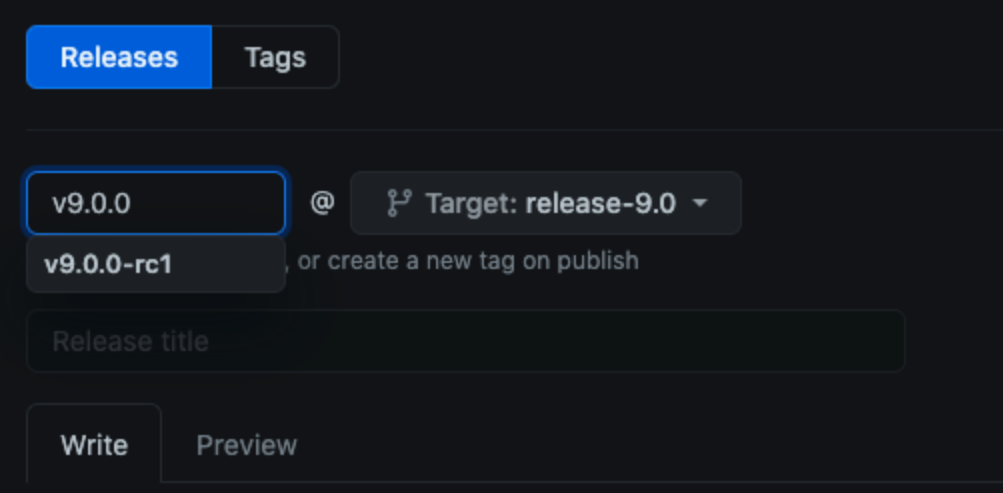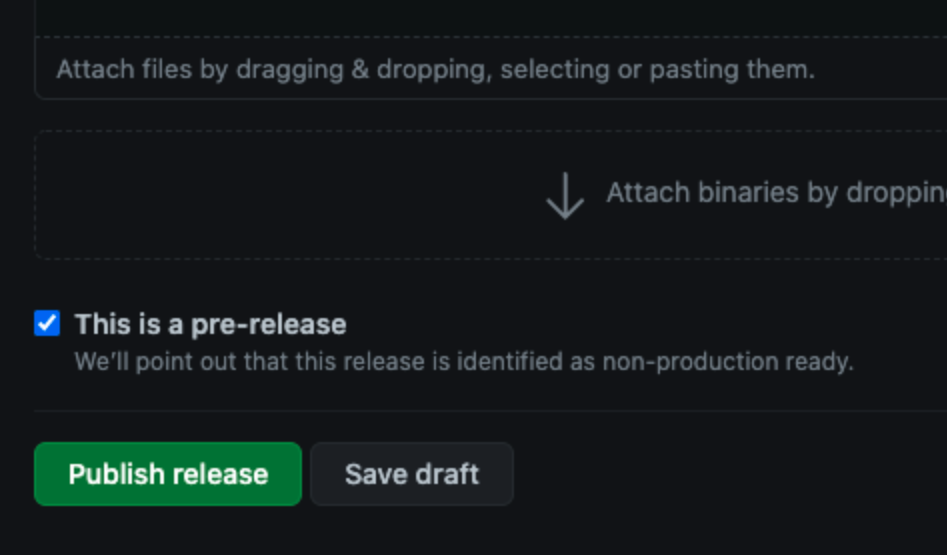10 KiB
Release Instructions
This page describes the steps for cutting a new open source release.
Versioning
Our versioning strategy is based on VEP5.
Major Release (vX)
A new major release is needed when the public API changes in a backward-incompatible way -- for example, when removing deprecated interfaces.
Our public API includes (but is not limited to):
- The VTGate RPC interfaces.
- The interfaces exposed by the VTGate client library in each language.
Care must also be taken when changing the format of any data stored by a live system, such as topology data or Vitess-internal tables (used for sequences, distributed transactions, etc.). Although this data is considered as internal to Vitess, if any change breaks the upgrade path for a live system (for example, requiring that it be shut down and reinitialized from scratch), then it must be considered as a breaking change.
Minor Release (vX.Y)
A new minor release indicates that functionality has been added or changed in a backward-compatible way. This should be the majority of normal releases.
Patch Release (vX.Y.Z)
A patch release indicates that only a select set of bugfixes have been
cherry-picked onto the associated minor release. The expectation is that
upgrading by a patch release should be painless (not requiring any config
changes) and safe (isolated from active development on main).
Pre-Release Labels (vX.Y.Z-labelN)
Pre-release versions should be labeled with a suffix like -beta2 or -rc1.
Release Branches
Each major and minor releases (X.Y) should have a release branch named
release-X.Y. This branch should diverge from main when the code freeze when the release
is declared, after which point only bugfix PRs should be cherry-picked onto the branch.
All other activity on main will go out with a subsequent major or minor release.
git checkout main
git pull --ff-only upstream main
git checkout -b release-X.Y
git push upstream release-X.Y
The branches are named release-X.Y to distinguish them from point-in-time
tags, which are named vX.Y.Z.
Release Tags
While the release branch is a moving target, release tags mark point-in-time snapshots of the repository. Essentially, a tag assigns a human-readable name to a specific Git commit hash. Although it's technically possible to reassign a tag name to a different hash, we must never do this.
Docker Images
Docker images built automatically on DockerHub and can be found here.
Java Packages
We publish binary packages for our JDBC driver and Java client on Maven Central.
To do so, we use the http://oss.sonatype.org/ repository. New packages must be uploaded there ("deployed") and will be automatically published ("released"). Once they are released there, they will be automatically synchronized with Maven Central. The synchronization takes only several minutes, but the update on http://search.maven.org may take up to two hours.
Access to oss.sonatype.org
Sign up here.
Then you must be added as member to our io.vitess namespace.
Therefore, file a JIRA ticket with Sonatype to get added (example for a different namespace).
One-time setup
Set up GPG
Follow Sonatype's GPG instructions.
Install gpg-agent (needed below) e.g. on Ubuntu via: sudo apt-get install gnupg-agent.
Login configuration
Create the settings.xml in the $HOME/.m2/ directory as described in their instructions.
Release Cutover
The release cutover section is divided in 4 steps:
- Pre requisites for either Release or Release Candidate (
rc). - Creation of Release or Release Candidate (
rc) on GitHub. - Post release steps.
- Java Packages deploy.
Pre-Requisites for Release Candidates (rc)
In this example our current version is
v11and we release the versionv12.0.0-rc1.
-
Announce dates on Vitess slack
#release-planning. -
Fetch
github.com/vitessio/vitess's remote.git fetch <vitessio/vitess remote> -
Build a Release Notes document using the Makefile:
make VERSION="v12.0.0" FROM="<ref/SHA of the latest tag for v11>" TO="<ref/SHA of main>" SUMMARY="./doc/releasenotes/12_0_0_summary.md" release-notes -
Check to make sure all labels and categories set for each PR.
The Release Notes document can be put aside for now, it will be used when creating the release tag in a future step.
-
Create a new release branch from main.
git checkout -b release-12.0 upstream/main -
Run the release script using the Makefile:
make RELEASE_VERSION="12.0.0-rc1" DEV_VERSION="12.0.0-SNAPSHOT" do_releaseThe script will prompt you
Pausing so relase notes can be added. Press enter to continue, execute the next step and press enter. -
Put the Release Notes document in
./doc/releasenotes/12_0_0_release_notes.md. -
Push the current dev branch to upstream. No pull request required.
git push upstream release-12.0 -
As prompted in the
do_releaseMakefile command's output, push the thev12.0.0-rc1tag.git push upstream v12.0.0-rc1 -
Release the tag on GitHub UI as explained in the following section.
Pre-Requisites for Releases
In this example our current version is
v11and we release the versionv12.0.0.
-
Announce dates on Vitess slack
#release-planning. -
Fetch
github.com/vitessio/vitess's remote.git fetch <vitessio/vitess remote> -
Build a Release Notes document using the Makefile:
make VERSION="v12.0.0" FROM="<ref/SHA of the latest tag for v11>" TO="<ref/SHA of main>" SUMMARY="./doc/releasenotes/12_0_0_summary.md" release-notes -
Check to make sure all labels and categories set for each PR.
The Release Notes document can be put aside for now, it will be used when creating the release tag in a future step.
-
Make sure to stand in the latest commit of the release branch (
upstream/release-12.0in our example). Then, checkout to a new branch that will be used to push our release commits.git checkout -b at-release-12.0.0 upstream/release-12.0 -
Run the release script using the Makefile:
make RELEASE_VERSION="12.0.0" GODOC_RELEASE_VERSION="0.12.0" DEV_VERSION="12.0.1-SNAPSHOT" do_releaseThe script will prompt you
Pausing so relase notes can be added. Press enter to continue, execute the next step and press enter. -
Put the Release Notes document in
./doc/releasenotes/12_0_0_release_notes.md. -
Put the output in
./doc/releasenotes/12_0_0_release_notes.md. -
Push your current branch and create a pull request against the existing
release-12.0branch.git push origin at-release-12.0.0 -
As prompted in the
do_releaseMakefile command's output, push thev12.0.0andv0.12.0tags.git push upstream v12.0.0 && git push upstream v0.12.0 -
Release the tag on GitHub UI as explained in the following section.
Creating Release or Release Candidate
In the below steps, we use
v8.0.0andv9.0.0as an example.
1. Open the releases page
On Vitess' GitHub repository main page, click on Code -> Releases.
2. Draft a new release
On the Releases page, click on Draft a new release.
3. Tag a new release
When drafting a new release, we are asked to choose the release's tag and branch.
We format the tag this way: v9.0.0. We append -rcN to the tag name for release candidates,
with N being the increment of the release candidate.
4. Add release notes and release
Copy/paste the previously built Release Notes into the description of the release.
If this is a pre-release (rc) select the pre-release checkbox.
And finally, click on Publish release.
Post Release Steps
- Announce new release in Vitess Slack
#generalchannel. - Create a new PR for Vitess Blog.
- Netlify -> Sites →vitess.io → Deploy

- Coordinate CNCF cross-posting Vitess Blog.
- Schedule and publish Tweet on Vitess account.
- Run following script to once the
baseDocker image is live.
https://github.com/vitessio/vitess/blob/main/docker/release.sh
- Deploy and release Java packages by following the
Java Packages Deploy & Releasesection below.
Java Packages Deploy & Release
Warning: This section's steps need to be executed only when releasing a new major version of Vitess, or if the Java packages changed from one minor/patch version to another.
For this example, we assume we juste released
v12.0.0.
-
Checkout to the release commit.
git checkout v12.0.0 -
Run
gpg-agentto avoid that Maven will constantly prompt you for the password of your private key.eval $(gpg-agent --daemon --no-grab --write-env-file $HOME/.gpg-agent-info) export GPG_TTY=$(tty) export GPG_AGENT_INFO -
Deploy (upload) the Java code to the oss.sonatype.org repository:
Warning: After the deployment, the Java packages will be automatically released. Once released, you cannot delete them. The only option is to upload a newer version (e.g. increment the patch level).
mvn clean deploy -P release -DskipTests cd ..



